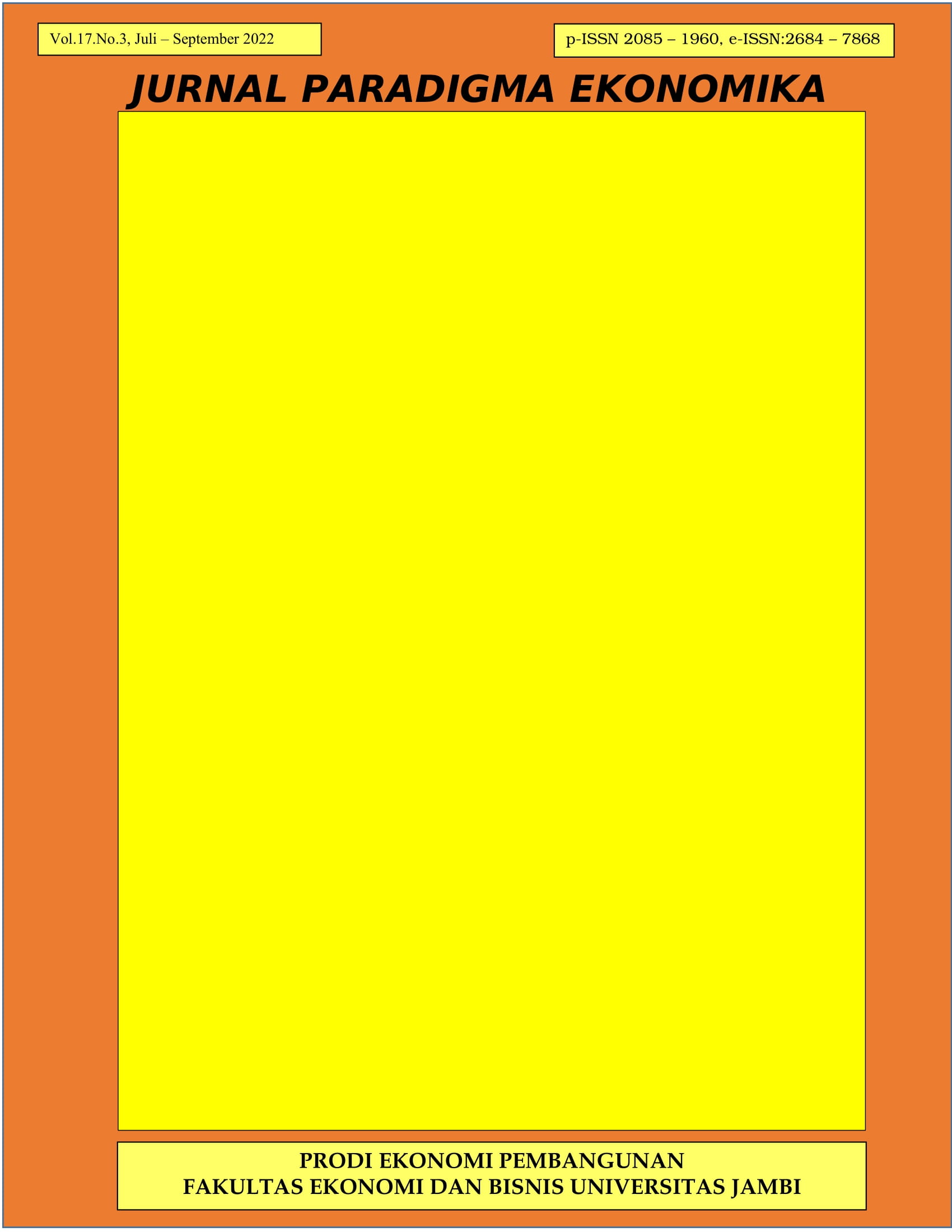Transformasi pelayanan publik digital di masa pandemi covid-19 untuk mewujudkan e-government di Lingkungan Pemerintah Daerah Kota Jambi.
Keywords:
transformation, e-government, public serviceAbstract
The COVID-19 pandemic has also accelerated virtual transformation in various countries. Technological developments are increasingly sophisticated. Various innovations have sprung up in every government agency. This affects the accessibility of public services. This online service is the result of the implementation of E-Government. This study aims to determine the transformation of digital public services during the Covid-19 pandemic to realize E-Government within the Jambi City Regional Government. This study uses an observational research type. Forms of data collection with documents, observations and in-depth interviews then the researchers tested the credibility and carried out data analysis including data reduction, data presentation and research conclusions. The research design used is a qualitative research method. All data were obtained using analysis on various related literature. The results of the study show that if you want to realize the maximum e-government system in Jambi City, synergy is needed from various Regional Apparatus Organizations (OPD) related to data in the Jambi City Government. So that this digital government transformation is felt by the community, because if the government wants to rebuild public trust, then by increasing government transparency, accessibility, communication, and quality of service the community will feel directly.
Downloads
References
Amelia Tasyah, Puji Ayu Lestari, Anada Syofira, Cintania Ade Rahmayani, Rizka Dwi Cahyani, Novita Tresiana. (2021) Inovasi pelayanan publik berbasis digital (e-government) di Era Pandemi Covid-19, Jurnal Ilmu Administrasi Media Pengembangan Ilmu dan Praktek Administrasi, 18(2), 212-224
Andhika, L. R., Nurasa, H., Karlina, N., & Candradewini, C. (2018). Logic model of governance innovation and public policy in public service. Policy & Governance Review, Policy & Governance Review, 2(2), 85-98.
Bannister, F., & Connolly, R. (2014). ICT, public values and transformative government: A framework and programme for research. Government Information Quarterly, 31(1), 119–128.
Chairudin, moehhamad. Setyowati, K. Guharto, DG. (2017). High performance is not always directly proportional to service quality: a case of one-stop service of sragen. International Journal of Administrative Science & Organization. 24(2).
Gracia, D. B., & Casaló Ariño, L. V. (2015). Rebuilding public trust in government administrations through e-government actions. Revista Española de Investigación de Marketing ESIC, 19(1), 1–11.
Gracia, D. B., & Casaló Ariño, L. V. (2015). Rebuilding public trust in government administrations through e-government actions. Revista Española de Investigación de Marketing ESIC, 19(1), 1–11.
Hendriyaldi. (2019). Revolusi industri 4.0: tantangan dan pluang manjemen sumber daya manusia untuk meningkatkan produktivitas Grand Hotel Jambi. Jurnal Manajemen dan Sains. 4(2).
Hendriyaldi. Musnain. (2021). Analisis pengaruh pelayanan publik dan e-service quality terhadap kepuasan masyarakat di lingkungan pemerintahan Kota Jambi. Jurnal Manajemen Terapan dan Keuangan, 10(1).
Inas Tasya Firdaus. (2021). Transformasi birokrasi digital di masa pandemi Covid-19 untuk mewujudkan digitalisasi pemeritahan Indonesia,4(2).
Indrajit, Richardus Eko. (2002). Electronic government in action. ragam kasus implementasi sukses di berbagai belahan dunia. Andi: Yogyakarta.
Ingrams, A., Manoharan, A., Schmidthuber, L., & Holzer, M. (2020). Stages and determinants of e-governmentdevelopment: a twelve-year longitudinalstudy of global cities. International Public Management Journal, 23(6), 731–789.
Irsan. (2012). Kualitas pelayanan kesehatan pada puskesmas simpur di Bandar Lampung. Tesis. Universitas Lampung: Bandar Lampung.
Jenny Huang, & Karduck, A. (2017). A methodology for digital government transformation. Journal of Economics, Business and Management, 5(6), 246-254
Klaus Schwab. (2017). The fourth industrial revolution, publisher: Penguin; 1st Edition
Knowlton, L. W., & Phillips, C. C. (2013). The logic model guidebook: bett er strategies for great results. SAGE Publications.
Liffler, M., & Tschiesner, A. (2013). The intrnet of things and the future of manufacturing. McKinsey & Company.
Laseau, (1980). dalam Sembiring. (2006). Kategori transformasi.
Navarin, Hendriyaldi, Wahyu. (2020). Analisis kepuasan masyarakat terhadap pelayanan melalui e-service quality di Kota Jambi. Publika: Jurnal Ilmu Administrasi Publik. 6(2).
Sugiyono. (2018). Metode penelitian kombinasi (mixed methods). CV Alfabeta: Bandung.
Suzuki, K., & Demircioglu, M. A. (2019). The association between administrative characteristics and national level innovative activity: Findings from a cross-national study. Public Performance & Management Review, 42(4), 755–782.
Pasolong, Harbani. (2012). Teori administrasi publik. Alfabeta: Yogyakarta.
Wibawa, Samodra. (2009). Administrasi negara; isu-isu kontemporer. Graha Ilmu: Yogyakarta.
Silcock, Rachel. (2001). What is e-government?. Parliamentary affairs, 54(1), 88-101.
Sunaedi, falih dan Wardiyanto, Bintoro. (2010). Revitalisasi Administrasi Negara (Reformasi Birokrasi dan E-Governance. Graha Ilmu: Yogyakarta.
Instruksi Presiden Republik Indonesia Nomor 3 Tahun 2003 tentang kebijakan dan strategi nasional pengembangan e-government
Torfing, J., & Triantafillou, P. (2016). Enhancing public innovation by transforming public governance. Cambridge University Press.
Vivona, R., Demircioglu, M. A., & Raghavan, A. (2020). Innovation and innovativeness for the public servant of the future: what, why, how, where, and when. The Palgrave Handbook of the Public Servant, June, 1–22. https://doi.org/10.1007/978-3-030-03008-7
Wulansari, A., & Subriadi, A. P. (2017). Developing citizen relationship management (CiRM) Oriented E-Government Maturity Model. IPTEK Journal of Engineering, 3(1), 22–28.
PP Nomor 21 Tahun 2020 tentang pembatasan sosial berskala besar dalam rangka percepatan penanganan corona virus disease (COVID-19)
Surat Edaran menteri pendayagunaan aparatur negara dan reformasi birokrasi (PANRB) Nomor 19 Tahun 2020 tentang penyesuaian sistem kerja aparatur sipil negara dalam upaya pencegahan penyebaran COVID-19 di lingkungan instasi pemerintah
Undang-Undang No 25 Tahun 2009 tentang pelayanan publik
Undang-Undang Republik Indonesia Nomor 14 Tahun 2008 tentang keterbukaan informasi publik
https://www.twilio.com/covid-19-digital-engagement-report di akses 12 Maret 2022
https://www.kemenkeu.go.id/ di akses 10 Maret 2022
https://doi.org/10.1093/pa/54.1.88 di akses 12 Maret 2022
https://www.jambi-independent.co.id/read/2021/12/23/18965/sistem-smart-city-akan-diadopsi di akses 12 Maret 2022
http://transform-org.blogspot.co.id apakah-transformasi-itu.html. diakses pada 12 Maret 2022
Downloads
Published
How to Cite
Issue
Section
License
Copyright (c) 2022 Hendriyaldi Hendriyaldi, Erida Erida, Ovie Yanti

This work is licensed under a Creative Commons Attribution-ShareAlike 4.0 International License.









